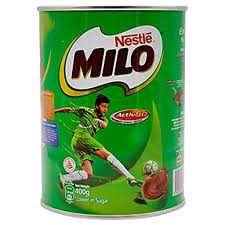The Effects of Eating Too Much Milo
Milo, a popular chocolate malt beverage, is loved for its unique taste and the energy boost it provides. Made from malt barley, cocoa, sugar, and milk powder, it’s often enjoyed as a hot drink or in recipes. However, Milo can also be consumed straight from the can as a powder, which is a common trend, especially among children and teenagers. While having Milo in moderation as part of a balanced diet is generally harmless, excessive consumption can lead to several health concerns. This article explores the potential effects of eating too much Milo and why moderation is essential.
1. High Sugar Content and Its Implications
One of the main ingredients in Milo is sugar. A single serving of Milo contains a significant amount of added sugars, and consuming it frequently or in large amounts can lead to excessive sugar intake. Over time, this can contribute to a range of health issues such as obesity, type 2 diabetes, and heart disease. Consuming too much sugar also leads to spikes and crashes in blood sugar levels, causing fluctuations in energy and mood. For children and teens who enjoy eating Milo powder directly, the sugar content can be especially problematic, potentially resulting in cavities, hyperactivity, and increased risk of developing insulin resistance.
2. Caloric Overload and Weight Gain
Another important consideration is the high caloric value of Milo. When Milo is consumed as a drink, it is usually mixed with milk or water, which can dilute the caloric density. However, when consumed as powder directly from the can, it’s easy to eat multiple servings without realizing the number of calories being consumed. Excessive caloric intake, without corresponding physical activity, can lead to weight gain and, over time, may contribute to obesity. This risk is particularly high among children and teenagers, who may not be aware of the potential consequences of their habits.
3. Impact on Dental Health
Because Milo contains a mix of sugar and carbohydrates, eating it frequently without proper oral hygiene can lead to dental issues. When the powder is eaten dry, it tends to stick to teeth, providing an ideal environment for bacteria to thrive. These bacteria convert sugars into acids, which can erode tooth enamel and lead to cavities. Poor dental health can cause pain, discomfort, and in severe cases, loss of teeth. Regular consumption of sugary, starchy foods like Milo without proper dental care increases the risk of such outcomes.
4. Blood Pressure and Heart Health Concerns
The high sugar content in Milo can contribute to high blood pressure over time, especially if accompanied by a diet that is generally high in sugars and processed foods. Additionally, some Milo formulations may contain added fats or oils, potentially raising the levels of unhealthy fats in the body. Excess sugar and unhealthy fats have been linked to increased risks of high blood pressure, high cholesterol, and cardiovascular diseases. While an occasional Milo treat won’t cause immediate harm, regular overconsumption can gradually increase these health risks.
5. Addiction to Sugary Foods
The appealing taste of Milo, due to its high sugar content, can make it somewhat addictive. Consuming sugary foods like Milo regularly can increase cravings for sweets, making it difficult to maintain a balanced diet. Over time, this can lead to poor eating habits, as the body starts preferring quick sources of sugar for energy, disregarding other nutritious foods. This pattern of sugar dependency can also make it challenging for individuals to adapt to healthier dietary choices.
6. Interference with Balanced Nutrition
Milo may provide energy and some micronutrients, but it doesn’t contain the full spectrum of nutrients needed for a balanced diet. Consuming large amounts of Milo in place of more nutritious foods can lead to nutrient imbalances and deficiencies. For instance, over-reliance on Milo as a snack can mean fewer servings of fresh fruits, vegetables, and whole grains, which are essential for long-term health. This pattern can be especially detrimental to growing children who require a varied diet to support their physical and cognitive development.
Conclusion: Practice Moderation
While Milo can be an enjoyable addition to the diet, overconsumption, especially in its powdered form, poses potential health risks. To enjoy Milo without negative effects, moderation is key. Opting to mix Milo into milk or water instead of eating it as a dry powder can help control sugar intake and reduce the likelihood of consuming multiple servings at once. Additionally, focusing on a balanced diet rich in whole foods can provide lasting energy and support overall health. Teaching children about portion control and healthy eating habits can further help prevent the risks associated with eating too much Milo.


